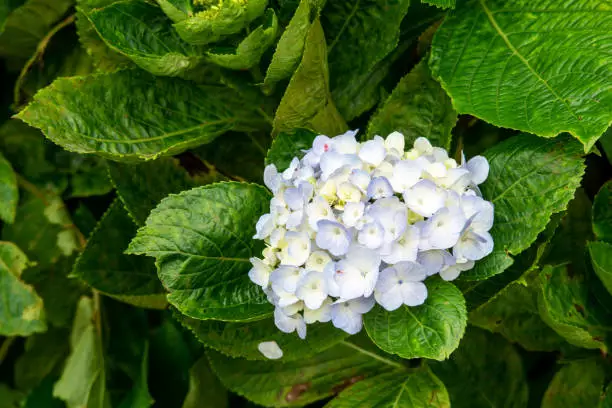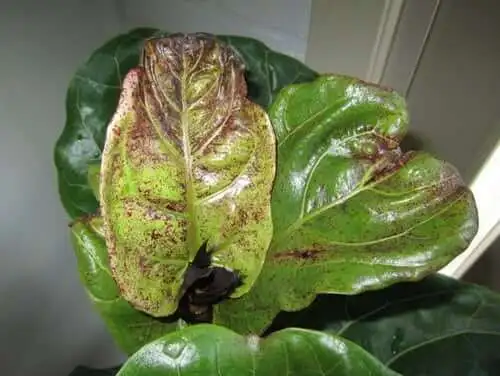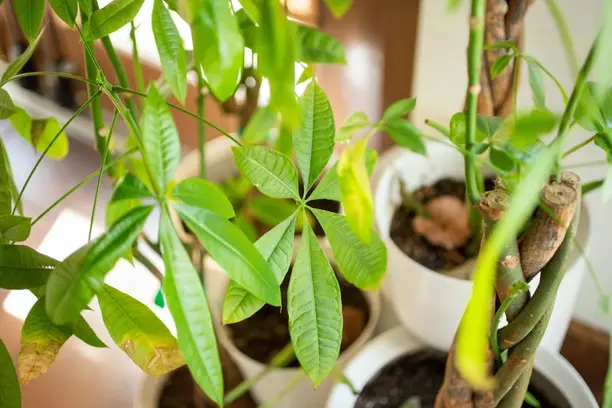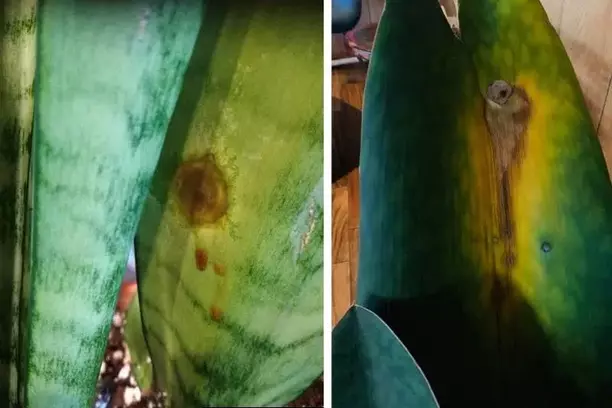Aloe vera plants are popular for their medicinal properties and versatility in home gardens. They are easy to care for, making them a go-to choice for people who may not have a green thumb. However, even these hardy plants can face some issues, such as their leaves bending or drooping.
Several factors may contribute to the bending or drooping leaves of an aloe vera plant. Insufficient sunlight, overwatering, and an inappropriate container can all play a role in the health of the plant. Understanding these causes and how to address them is essential for maintaining the well-being of your beloved aloe vera plant.
In the following article, we will explore these potential causes in greater detail and provide insights on how to address them. The key is to be observant and attentive to your plant’s needs to ensure its continuous growth and vigor.
Causes of Aloe Vera Plant Leaves Bending or Drooling
Overwatering
One common cause of aloe vera plant leaves bending or drooping is overwatering. Aloe vera is a succulent, which means it stores water in its leaves and can tolerate periods of drought. Watering the plant too frequently or providing too much water can lead to waterlogged roots, causing the leaves to become heavy and droop. To prevent overwatering, ensure that the soil is allowed to dry out between waterings, and use a well-draining soil mix.
Underwatering
On the other hand, underwatering can also cause aloe vera leaves to bend or droop. When the plant does not receive enough water, its leaves will start to wilt, curl, or shrivel. To determine if your aloe plant needs more frequent watering, test the soil moisture by sticking your finger about an inch into the soil. If it feels dry, water the plant thoroughly, allowing excess water to drain away.
Inadequate Light
Aloe vera plants require bright, indirect light to grow properly. If the plant is not receiving enough light, its leaves may become elongated, weak, and bend towards the light source. To remedy this, move your plant to a brighter location with consistent, indirect sunlight, or consider supplementing with a grow light.
Temperature Changes
Aloe vera plants are sensitive to temperature changes, and sudden fluctuations can cause leaf bending or drooping. Extreme heat can cause the leaf tissue to become soft and bend, whereas cold temperatures can damage the cells, leading to drooping. To avoid temperature-related issues, keep the plant in a location where the temperature remains between 55°F (13°C) and 80°F (27°C).
Disease and Pests
Disease and pests can also lead to aloe vera leaves bending or drooling. Common pests that can attack aloe plants include mealybugs, aphids, and spider mites. These pests can cause leaves to become weak and droop. Diseases, such as fungal infections, can also cause leaf damage and lead to bending or drooping. To prevent and treat pest infestations and diseases, monitor your plant closely and take action promptly if any signs of pests or disease are noticed.
Poor Drainage
Aloe vera plants require well-draining soil to prevent water buildup around their roots, which can lead to root rot and bending or drooping leaves. Ensure that the plant’s container has drainage holes and is filled with a well-draining soil mix. Additionally, avoid placing the plant on a saucer that holds water, as this can lead to waterlogged soil.
Root Rot
Root rot is a common issue for aloe vera plants and can cause leaves to bend or droop. This can be caused by overwatering, poor drainage, or inadequate soil conditions. To prevent root rot, provide the plant with proper care, including proper watering, well-draining soil, and a suitable container with drainage holes. If root rot is identified, remove any rotten roots, allow the plant to dry out, and repot it in fresh soil and a new container.
Signs and Symptoms
In this section, we will discuss the various signs and symptoms that may indicate an issue with your Aloe vera plant.
Brown Leaves
Brown leaves are often a sign of the plant receiving too much sunlight or not getting enough water. It is essential to ensure that your Aloe vera plant receives adequate moisture and is not exposed to excessive sunlight. A slight change in location or watering schedule may be necessary to prevent the leaves from turning brown.
Creased or Bending Leaves
Creased or bending leaves can be a sign of dehydration in your Aloe vera plant. This can occur when the plant does not receive sufficient water, or the humidity level is too low. To remedy this, maintain a consistent watering schedule and increase the humidity around the plant by using a pebble tray or a humidifier.
Mushy Base
A mushy base in Aloe vera plants is often indicative of over-watering or poor drainage. This can lead to rot and fungal infections at the base of the plant. To prevent this, ensure that the potting mix drains well, and avoid over-watering your plant.
Wilting
Wilting leaves in Aloe vera plants may be a result of underwatering or a fluctuation in temperature, which can cause stress to the plant. Regularly check the soil moisture and adjust your watering schedule accordingly. It is also essential to keep the plant in a location with consistent temperatures.
Leggy Growth
Leggy growth in Aloe vera plants is often a sign of insufficient light. Although Aloe vera can tolerate some shade, it requires bright, indirect light to thrive. Moving the plant to a location with more natural light, or supplementing with a grow light can help encourage healthier growth.
Fungal Infection
A fungal infection in Aloe vera plants can cause leaves to become discolored, wilt, or even rot. This can be the result of over-watering, poor drainage, or inadequate airflow around the plant. To prevent fungal infections, ensure proper watering habits and provide adequate airflow around the plant. Additionally, you can use a fungicide to treat any existing infections.
Solutions and Fixes
Prune Damaged Leaves
To help the aloe vera plant recover, it’s essential to prune damaged leaves first. Use a clean and sharp pair of scissors or pruning shears to remove the affected leaves as close to the base as possible. This will help ensure that the plant can focus its energy on healthy growth, rather than trying to repair damaged leaves.
Repotting the Plant
Sometimes, a drooping aloe vera plant may be due to crowded roots or inadequate drainage. In such cases, repotting the plant can help. Choose a well-draining pot with drainage holes and a slightly larger size than the current one. Fill it with a well-draining soil mix, such as a cactus or succulent mix. Carefully remove the plant from its current pot, shake off excess soil, and place it in the new pot. Fill in the gaps with the soil mix, and water the plant thoroughly.
Adjusting Watering Schedule
Overwatering can cause root rot and lead to drooping aloe vera leaves. It is crucial to adjust the watering schedule to prevent such issues. Aloe vera plants prefer to dry out between waterings, so reduce the frequency of watering and ensure that the soil is allowed to dry out at least 1-2 inches deep before watering again. Once the soil meets the dryness criteria, water the plant deeply and let the excess water drain.
Improving Light Access
Aloe vera plants thrive in bright, indirect light. If the plant is not receiving enough light, its leaves may droop. To correct this issue, move the plant to a brighter location, such as near a south-facing or east-facing window, where it can receive adequate, filtered sunlight. Avoid exposing the plant to direct sunlight, as this can cause sunburn and further damage.
Managing Temperature
Extreme temperatures or sudden changes in temperature can cause aloe vera leaves to droop. To prevent heat shock, maintain a consistent temperature between 55-80°F (13-27°C) for your plant. Avoid placing it near drafty windows, doors, or heating and cooling vents, as these can cause fluctuations in temperature that may harm the plant.
Pest and Disease Treatment
In some cases, aloe vera leaves may bend or droop due to pests or diseases. Inspect the plant for any signs of infestation or infection, such as discolored spots, tiny insects, or webbing. If you discover pests, treat the plant with a neem oil spray or an appropriate insecticide to eliminate them. For fungal infections, remove the affected leaves and apply a fungicide according to the manufacturer’s instructions. Monitor the plant closely to ensure that the problem has been resolved and doesn’t recur.
Frequently Asked Questions
Why are aloe vera leaves drooping after repotting?
Aloe vera leaves may droop after repotting due to root damage during the process or because of an abrupt change in the growing conditions. It is crucial to handle the plant gently during repotting and ensure that the new pot provides a suitable environment, such as proper drainage and appropriate soil. Give the plant some time to adjust to its new environment, and the leaves should eventually recover.
How can I fix a droopy aloe vera plant?
To fix a droopy aloe vera plant, start by assessing its care conditions. Ensure the plant receives proper sunlight, avoid overwatering, and provide well-draining soil. If the drooping is due to underwatering, water the plant thoroughly and let the excess water drain. If it is because of overwatering, allow the soil to dry out before watering again. Improving the care conditions should help the plant recover and prevent the leaves from drooping.
What should I do with bent aloe leaves?
If you have bent aloe leaves, the best action is to leave them alone, as damaged leaves cannot repair themselves. However, if the bent leaves are causing further issues, they can be gently removed with a clean, sharp pair of scissors or a knife. Removing the damaged leaves will help the plant focus its energy on growing new, healthy leaves.
Can overwatering cause aloe vera leaves to droop?
Yes, overwatering can cause aloe vera leaves to droop. Aloe vera plants store water in their leaves and are susceptible to root rot when given excessive water. If the plant is overwatered, its leaves may become heavy, causing them to droop. It is essential to water aloe vera plants sparingly, allowing the soil to dry out between waterings.
How can I prevent my aloe vera from drooping?
To prevent aloe vera leaves from drooping, provide proper plant care. Ensure the plant receives sufficient sunlight, use well-draining soil, and avoid overwatering or underwatering. Monitor the plant’s health regularly and make adjustments when necessary to maintain its well-being.
Why are my aloe vera leaves turning brown and drooping?
Aloe vera leaves may turn brown and droop due to various factors, including excessive sun exposure, underwatering, overwatering, or a disease such as root rot. Determine the cause of the issue and address the problem accordingly. For example, if sunburn is the cause, move the plant to a shadier location. If root rot is the issue, repot the plant in fresh, well-draining soil. Addressing the underlying problem should help the plant recover and prevent further damage to the leaves.



